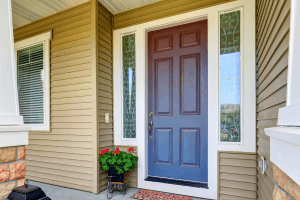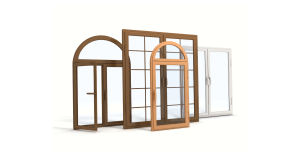Many homes in the northern hemisphere are designed to maximize winter solar heat by increasing south-facing window area. But for this design element to be useful, the solar heat admitted must be stored within the house so it can keep the rooms warm later in the afternoon and at night.
But during the cold winter months, this alone is not enough to keep the interior warm, forcing you to incur high energy costs. Fortunately, you can reduce your energy consumption by installing energy-efficient windows.
So, what are the best energy-efficient windows for a cold climate?
There are many different factors to consider when choosing windows for your home. The most important ones with regard to increasing efficiency are:
Efficient Window Frames
Energy-efficient windows must not have any air leakages. Manufacturers ensure this by using the appropriate types and designs of window frames, as the conductivity of the material used for the window frame impacts the energy efficiency of windows.
Some of the commonly used materials for window frames include vinyl, fibreglass, wood, and aluminum. Vinyl frames are the most efficient, plus they require low maintenance. Fibreglass frames are also a good option with regard to efficiency, and so are timber frames, except for the high maintenance requirements. Aluminum is highly durable, but it has low efficiency and is not recommended for cold climate.
Proper Glass Selection
Choosing the right window glasses can help to reduce heat loss and save on the energy needed for heating your space. There are three factors to consider when choosing window glass:
- Visible transmission (VT) – This is a measure of the amount of daylight passing through the glass. It is recommended that you use window glasses with a higher VT value in cold climates. Their high efficiency reduces and even eliminates the need for turning on the lights.
- Solar Heat Gain Coefficient (SHGC) – This is a measure of the amount of heat passing through the window glass. The recommended value for window glass in cold climates is 0.55.
- U-value – The recommended value for window glass in cold climates is 0.33 or less.
Beyond these values, there are other ways to increase the energy efficiency of your windows, including:
- Using multi-pane windows (as opposed to single-pane style) that use a vacuum between the panes to improve insulation and reduce energy loss. The panes can also be filled with an inert gas, such as argon, krypton, or xenon to maximize their efficiency.
- Using low emissivity (low-e) glass, which uses a metallic oxide coating on the inner surface to inhibit heat transfer from warm to cool environments. The low-e coating should be applied on the external side of the innermost glass in cold climates.
Lastly, you may consider mounting storm windows on the inner or outer side of your main window glass to boost thermal efficiency, and nonmetallic warm-edge spacers to prevent condensation from forming on inside panes. As a rule of thumb, only shop for Energy Star qualified windows, as they are guaranteed to reduce your energy bills during the cold months.

